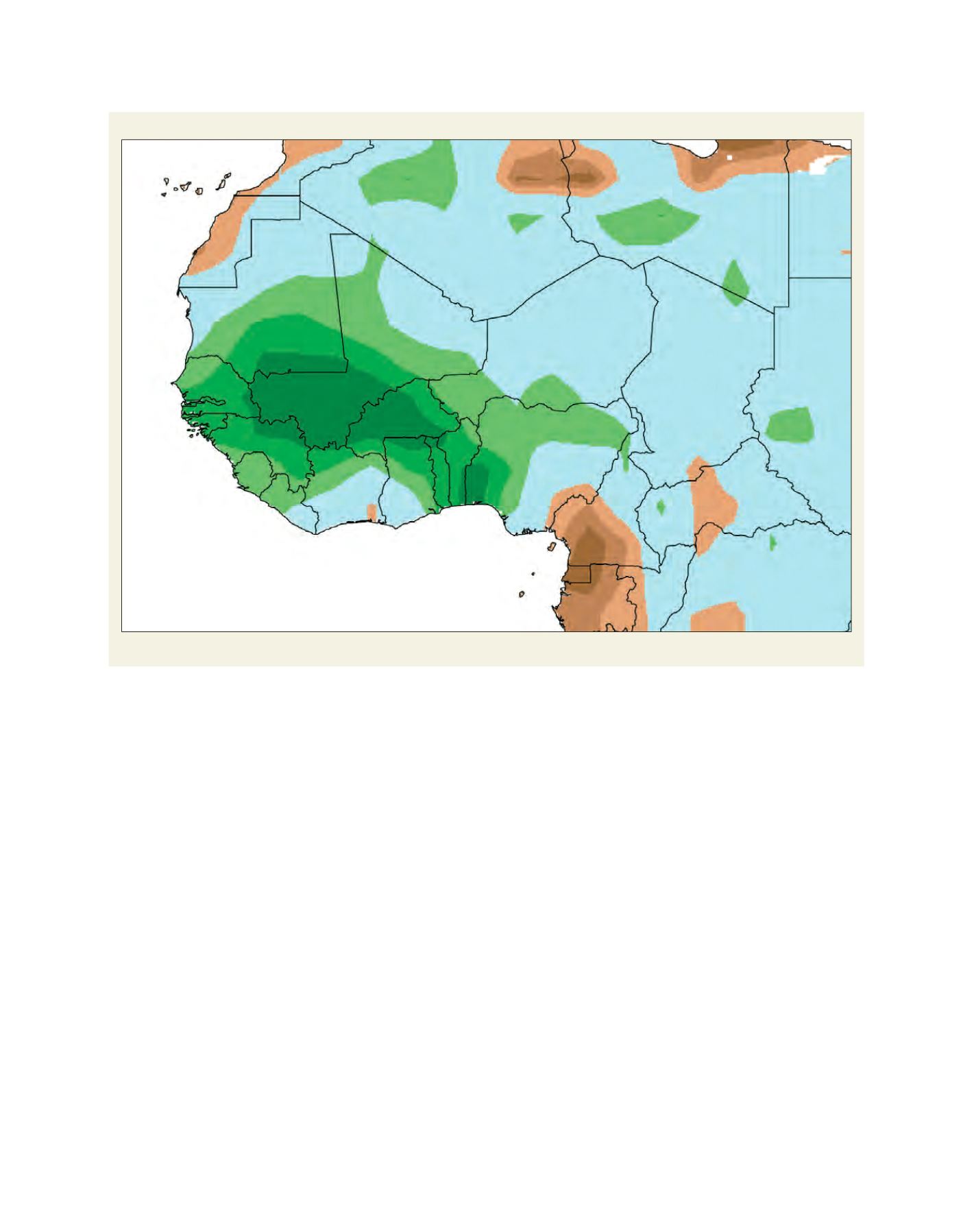

[
] 198
R
isk
G
oveRnance
and
M
anaGeMent
off. But using climate information on longer timescales is not a trivial
undertaking for humanitarian organizations.
One challenge is uncertainty. It is clear that climate change
exists and will lead to gradual changes such as melting glaciers
and rising sea levels, as well as more weather extremes. However,
specific consequences in individual places are often vague and
probabilistic, and may seem irrelevant in the face of pressing day-
to-day concerns. But, rather than confusing us by their lack of
clarity, these long-term warnings of rising risks and uncertainties
should be a strong incentive for increased early action through
disaster preparedness and risk reduction. We have long assisted
communities to prepare for the threats they know. Climate change
now requires us to help prepare them for threats that are unpre-
dictable in both severity and nature.
Similarly, probabilistic seasonal forecasts, while less precise than a
warning of a storm about to hit a particular city, give us a valuable
heads-up to prepare for higher levels of risk and be ready to act upon
more specific warnings at shorter timescales.
Communication and capacity for action
A second challenge is communication. Early warnings are irrelevant
if they are not received, understood and trusted by those who need to
act. New sources of scientific information provide us with new oppor-
tunities, but also continuously raise questions. What does it mean to
have a higher level of risk, sometimes including a higher
level of uncertainty? Should the national Red Cross or
Red Crescent society act, or wait? When does the risk
get so significant that we when does the risk become so
significant that we mobilize resources and volunteers?
And how do we present that knowledge to those at risk
in vulnerable communities? There is a need to transform
scientific information, which is often complex and in the
form of maps or percentages, into simple and accessible
messages that allow local people to make sensible deci-
sions on how to respond to an impending threat.
This requires firstly a continuous dialogue between
humanitarian professionals and volunteers and knowl-
edge centres at national, regional and global levels. A good
example of this is the ‘partnership to save lives’ between
the International Federation and the IRI, which stood
at the basis of the successful preparedness appeal in the
2007 West Africa flood season. It also requires expanded
investment in disaster risk reduction and preparedness at
all levels – community, local, national and international.
Only by combining scientific advances with the
resources and capacities to respond to warnings – at all
timescales and all geographical scales –will we be able to
counter the rising risks in a changing climate.
Source: Simon Mason, IRI
Observed rainfall for July-August 2008, West Africa
Brown shading indicates the drier than average areas; green shading, the wetter areas
















